We use a variety of gardening techniques across our subarctic gardens. Not just one or two, but several.
This post is all about those core gardening techniques that we use in our gardens.
We explain what gardening techniques we use and why we use them in this post.
If you’re curious about why we grow in-ground, in raised beds and in containers, this article will describe all the in’s and out’s of those decisions!
Why Do We Use Multiple Gardening Techniques For Success?
When we initially started gardening in the subarctic, we were immediately struck by how much more challenging it was.
Although we had been growing food in cold climates for years by that point, we experienced a number of unexpected challenges. We won’t kid you, sometimes we still experience challenges.
In our struggles, we quickly figured out that using different gardening techniques might be helpful for different plants.
It seemed plausible that if you combined the strengths of certain gardening techniques with the preferences and growing characteristics of certain plants, you might be able to achieve more optimal conditions for growing food in the subarctic.
For example, if a plant really doesn’t like cool soil and you combine that with a gardening technique that promotes warmer soils, you’re going to get a better result.

That makes sense. Right? Maybe it’s even common sense.
With multiple options, the northern gardener can use different techniques to harness the most effective and least expensive conditions they can grow their plants in.
Put another way, you can tailor the growing techniques to your specific plants, while also meeting their needs most effectively.
In the testing of this hypothesis, we essentially found three foundational gardening techniques that were helpful to use in subarctic gardening. One could call these our core gardening techniques.
The three major gardening techniques that we use are:
- In-ground gardening using wide-raised rows
- Raised bed gardening
- Container gardening
- We use sub-irrigated container gardening, both outdoors & in a greenhouse!
In-Ground Gardening Has A Place In Subarctic Gardening
We like to grow in the ground. It’s “real” gardening, if you will. When most people think about a garden, they immediately think about a patch of dirt in the backyard.
In the north, however, in ground gardening is not the sure-fire technique for every plant, like you might see in more southern latitudes.
The reason for this is that the northern ground is comparatively cool. While air temperatures are often quite suitable, our grounds are simply not warmed up as quickly.
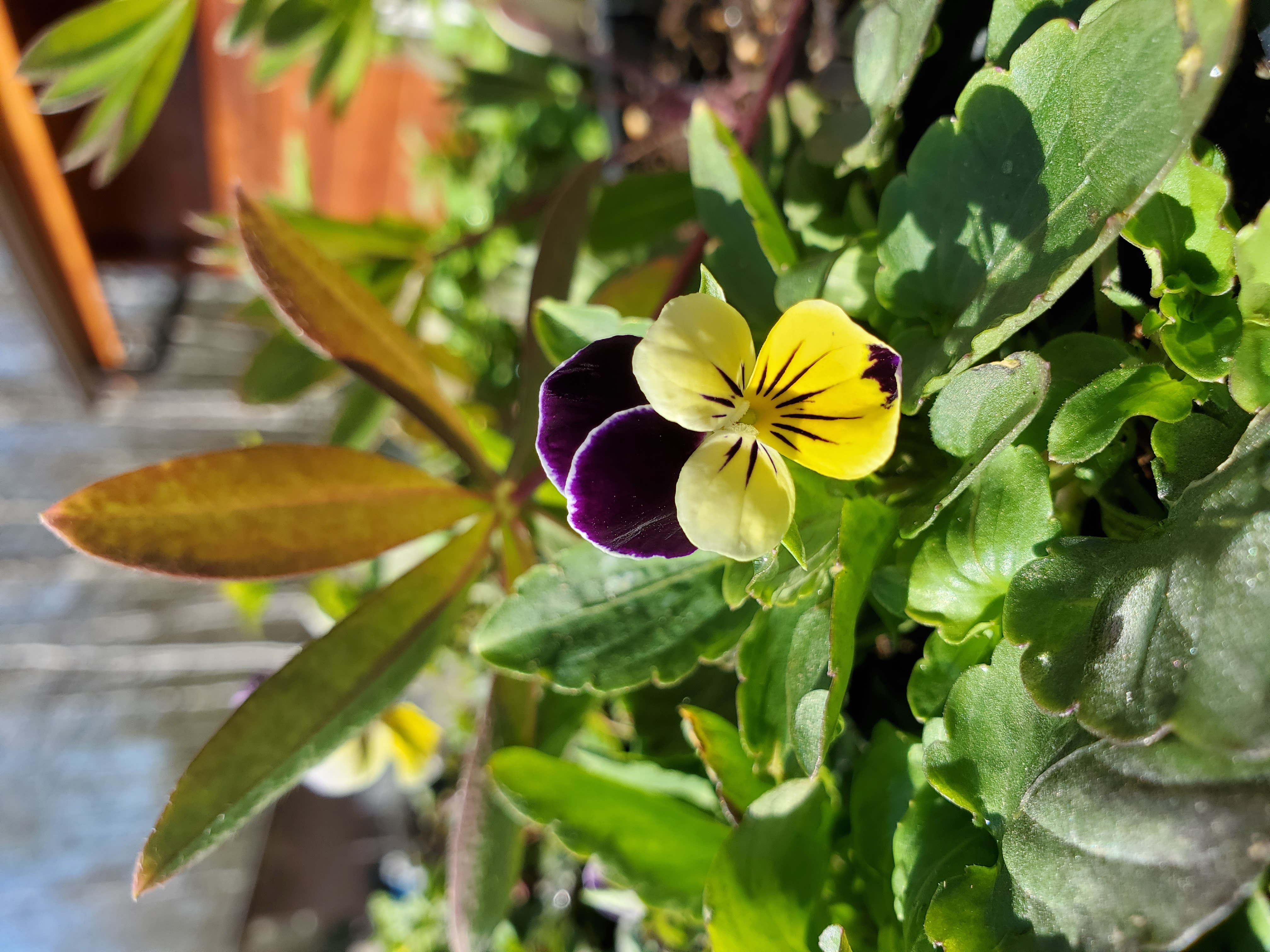
Nonetheless, ground based gardens in the subarctic can still do very well for a lot of different kinds of plants. Basically, any plant that doesn’t demand fairly warm roots will do well in the subarctic ground.
The list of plants that will take to cooler soil is, fortunately, quite large. It’s almost easier to think in opposite terms.
If we had to create a list, these are a pretty good chunk of common garden vegetables that don’t mind cooler soils:
- Garlic
- Onions
- Shallots
- Celery / celerac
- Mint
- Leeks
- Chives
- Brussels sprouts
- Brocolli
- Cabbage
- Cauliflower
- Collards
- Kale
- Lettuce, mustards, orach and spinach
- Kohlrabi
- Chard
- Potatoes
- Almost all root veggies (carrots, parsnips, beets, etc.)
- Strawberries
Any plants that are considered cold hardy or frost tolerant would typically do reasonably well in the subarctic ground. We identify these plant specific characteristics on our seed schedule.
That is not to say that these same plants wouldn’t grow better in warmer soils!
Growing In The Ground Is Better When It’s Raised
We have written an extensive piece on raised row gardening. It’s certainly one of the most basic, foundational gardening concepts that we like to use in the far north.
Raised row gardening is essentially the process of manipulating your soil to create raised garden beds. Unlike traditional raised beds, though, we don’t use wood or any other mechanisms to “secure” the bed.
We learned about this technique in Ann Robert’s book, Alaska Gardening Guide. She extensively covers the topic and explains why it’s a go-to technique in the far north.
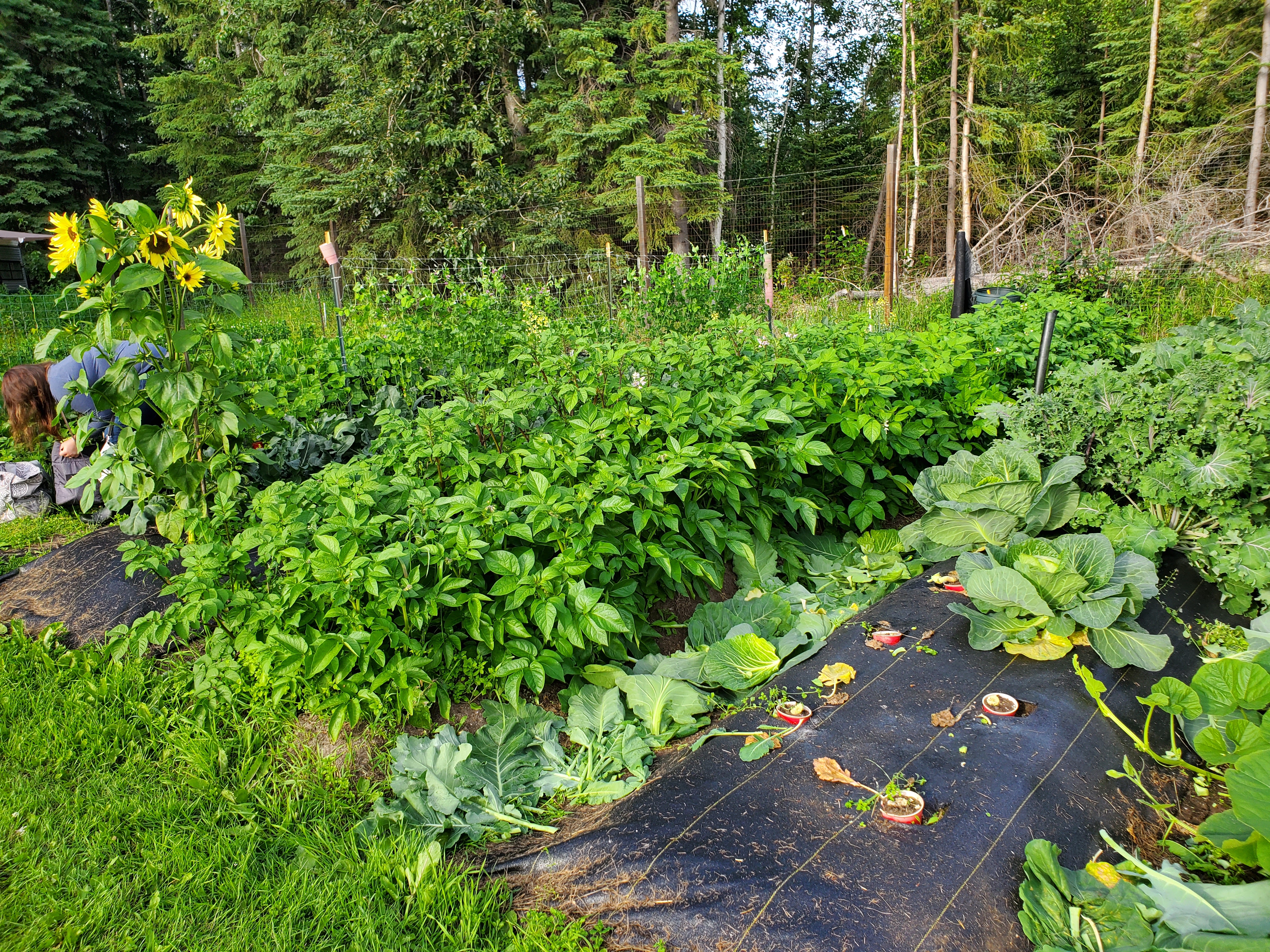
This is our community garden in late summer. We almost exclusively use the wide raised row technique at this garden. It’s great for potatoes, brassicas and squash!
The primary advantages of the raised row technique, over basic in-ground gardens, are:
- Easier for the sun to warm the soil
- Same cost (or barely more expensive) compared to in-ground gardens
- Significantly cheaper than raised beds
- Less area for compost applications and tilling requirements
- Provides distinctive walking/access paths
- Can be used with, or without, mulches such as weed fabric for flexibility in growing both ways
When compared to basic “in ground” gardens, it is apparent that raised rows provide several general benefits to the northern gardeners that use them.
As community gardeners, we have had had the opportunity to compare many raised row gardens directly against basic in-ground gardens. While there are always differences among individual gardeners, raised rows generally favor better in subarctic gardens.
Raised rows are one of the most cost effective and helpful in-ground growing techniques you can employ in the far north!
When Is In-Ground Gardening Is Not The Go-To?
In-ground gardens do have some general drawbacks. Especially in the subarctic.
The most obvious of these is that the subarctic ground is fairly cool. This makes it a poor choice for warmer climate vegetables such as tomatoes, eggplants, peppers and basil.
Native soils also tend to be inundated with various native species. In gardener’s terms, we like to call these weeds.
Subarctic weeds are formidable. Native grasses and persistent weeds that are fertilized, grown under the midnight sun and are otherwise given their best opportunity are not what we like to call a good time in the garden.
Weeding is our absolute least favorite task of gardening. That’s probably true for every gardener.
One of the ways me mitigate this problem is by using weed fabric on our in-ground gardens. This works great for plants that you transplant into the ground, since the plant is all ready well established and has a handy leg up in life.
We’re also growing larger plants here, those that require 18 to 36 inches of spacing between the plants. This means most of the space can be covered by the weed fabric (and thus, no weeds) with only small openings for the plants themselves.

We strongly prefer to use weed fabric over our wide raised row gardens. The only exception is potatoes (uncovered row), which quickly outgrow native species .
When it comes to direct sowing certain crops, these native weeds can cause some issues for you. The seeds of these native species are just as prone to germinating as the seeds that you are intentionally planting.
While you can use weed fabric to help your direct sow gardens, often times most direct sows are planted very intensively. You end up having to cut so many holes in the weed fabric that you sort of defeat the purpose of having it to begin with!
While you can direct sow in subarctic grounds, we don’t recommend it unless you really like weeding.
It is also more difficult to use general intensive gardening techniques on in-ground soils. Not only is the soil not fertile enough to support heavy plant densities, it’s difficult to eliminate these other native species from also gaining a foothold.
So, for the following types of plants, we prefer using a different technique that will help us mitigate problems with weeds:
- Anything direct sown (mostly root vegetables)
- Intensively planted gardens (lettuce, root crops, etc)
- Warm weather crops
Raised Beds Are Absolutely Worth It, But Not For Everything!
So, we know that raising the soil has some major benefits, particularly so in subarctic gardening. The next step up is raised beds.
To help with some of the challenges of typical in-ground gardens, gardeners figured out that building raised beds with controlled soils had its advantages.
What is great about raised beds is you have an opportunity to use soil that isn’t heavily infested with weed seeds. You can also make optimal soils with all the beneficial characteristics you’re looking for. (Such as being easy to remove weeds from.)
Once you build raised beds, they are not immune from weeds. But, at least you’re not starting with millions of seeds in your soil.
Cost is probably the biggest downfall for raised beds. They are expensive to build and they are expensive to put good soil in.
That said, raised beds can be really, really good. Especially when you want to plant intensively, getting a lot of food from a small space.
We built about 160 square feet of raised beds for exactly that purpose.
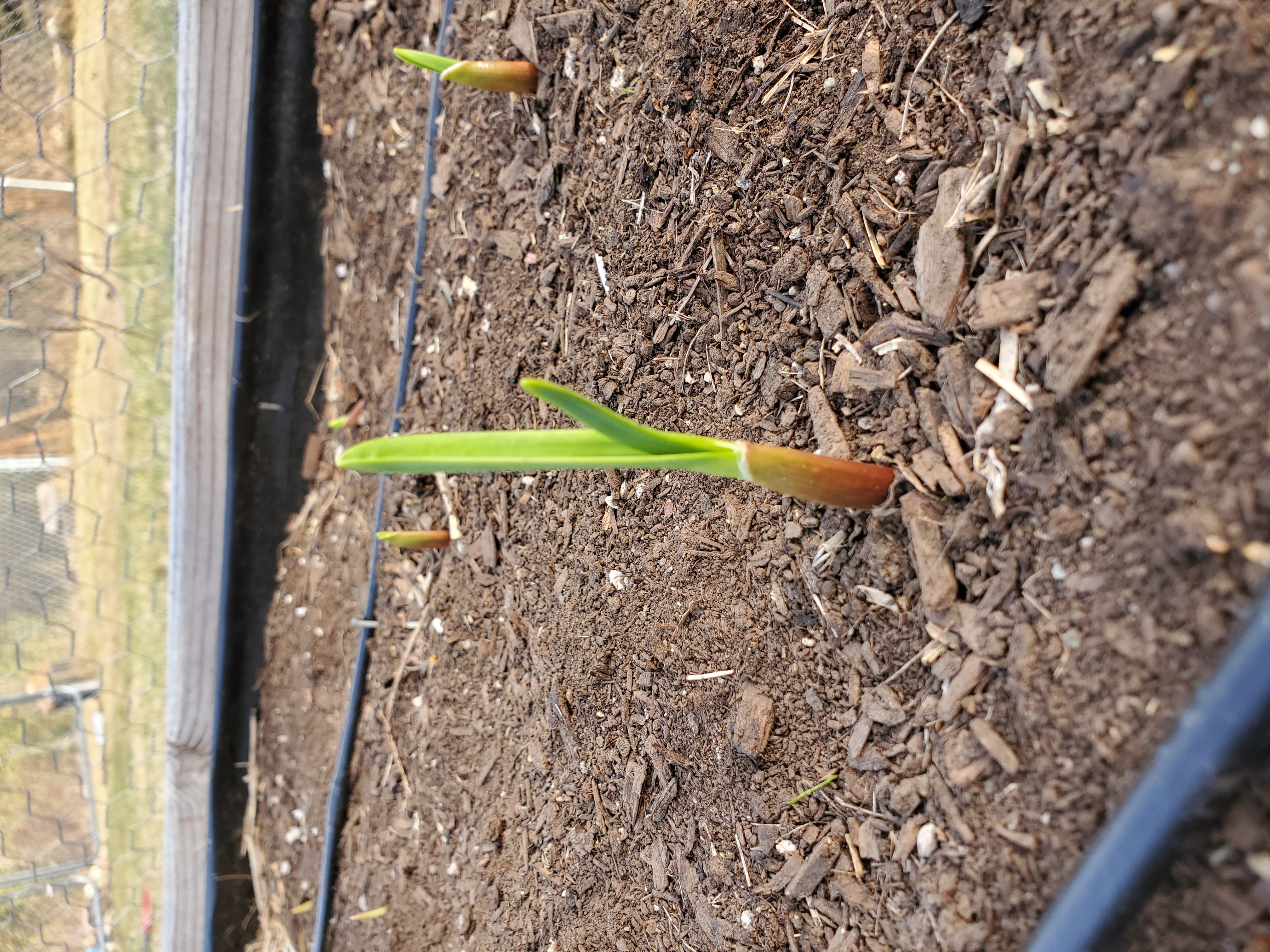
Pictured are several garlic in our raised beds. Garlic is a high value crop in our garden and is logical to grow in more expensive growing systems.
We took the effort to make good soil to put into our beds, giving us a great foundation for growing plants.
We would admit that we built premium grade beds, designed to last over a decade. But they were ridiculously expensive. Like over a grand expensive.
Due to their cost, raised beds are not necessarily the most desirable technique to grow everything.
We use them to grow intensively, so we’re attempting to maximize the food production we get for that higher cost.
We generally use our raised beds for the following types of vegetables, again, planted as intensively as is possible:
- Lettuces & greens
- Garlic
- Allium & onions
- Root vegetables (carrots, radish, parsnip, etc.)
- Strawberries
- Celery
- Sometimes herbs, but stay tuned…
We wouldn’t want to use raised beds, for example, with larger plants that need 12 to 24 inch spacing.
The reason is, your per-plant cost would be significant if you go that route. You’re essentially paying for soil to fill a space when it’s the plant’s leaves that need the space.
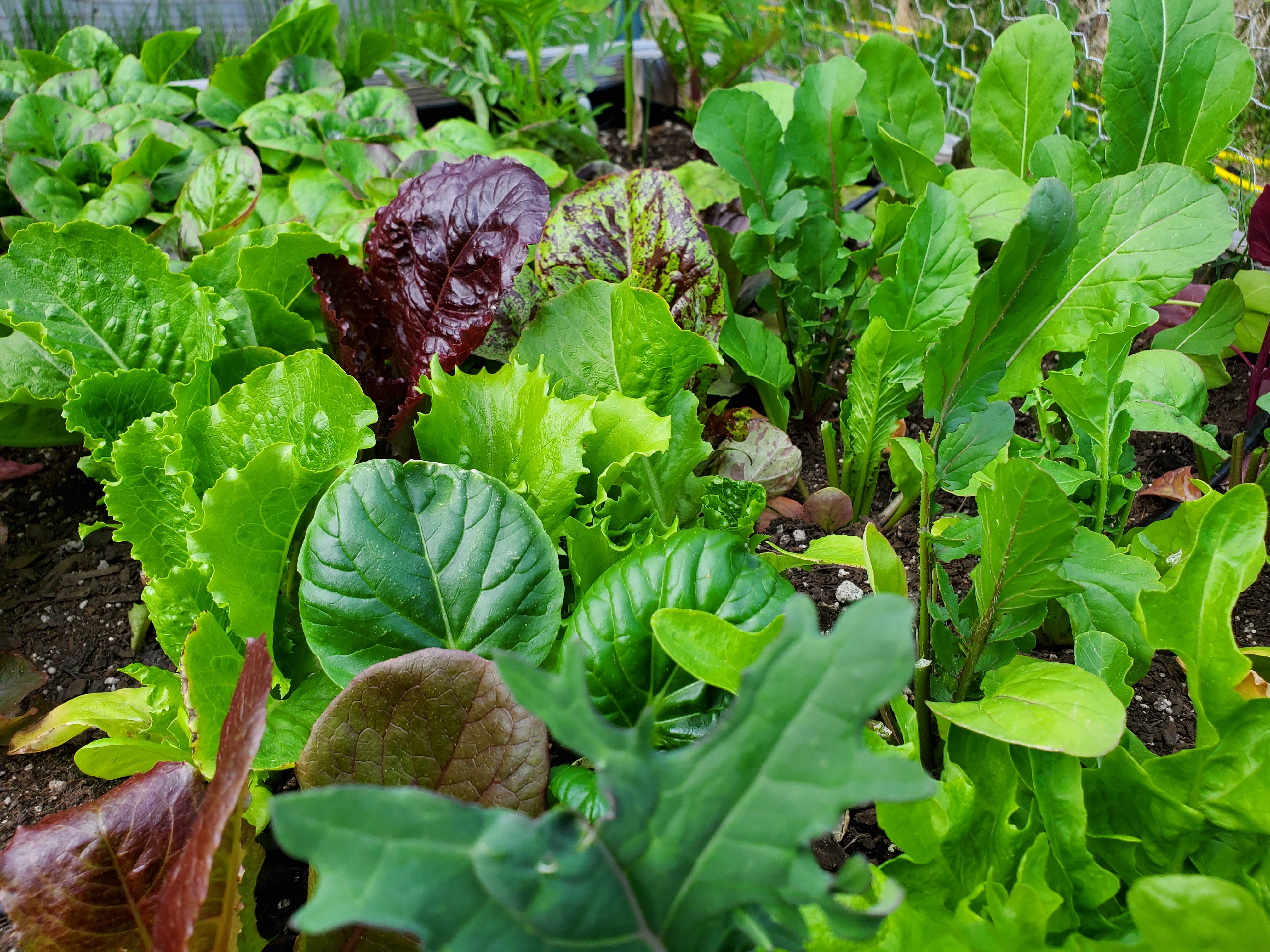
We use our raised beds for fairly high value crops, especially things we can plant intensively. A smorgasbord of high quality, heirloom leaf lettuces create incredible value for us.
For larger plants, it’s almost always better to choose either an in-ground technique or to use containers.
Speaking of containers, that’s our next topic!
Container Gardening Is An Excellent Subarctic Gardening Strategy
Container gardening is probably one of the most effective, cost-friendly and flexible growing techniques out there.
You can grow almost anything in a container.
Container gardening is also a technique that is too often overlooked. Sometimes container gardening is even disparaged as, “not really gardening” or “that’s what renter’s do.”
Some might find container gardening doesn’t “fit” their view of what gardening should be. We would be the first to admit it’s a very utilitarian approach to gardening.
But still, that’s all nonsense. It’s perfectly acceptable to have a pot of flowers, so should be a pot of vegetables.

We think container gardening offers some technical benefits that make it well worth integrating into the northern gardener’s repertoire.
Why Do Container Gardens Rock In The Subarctic?
In the subarctic, container gardens offer the gardener some very strategic and great benefits that might not be immediately obvious.
- Very rapid soil warm up times.
- Can use dark containers to further improve heat absorption
- Highly resistant to problems from heavy rain, voles and rabbits. The right placement can even deter moose effectively, such as a deck garden
- Can get the container off the ground and prevent the ground from cooling the container
- Allows uncommon garden locations that can provide radiant heating techniques, such as placing containers near your house
The most interesting of these to the northern gardener are those that related to soil temperatures.
What makes ground-based gardening in the subarctic so challenging is the comparatively cool soil temperatures. It’s the soil (and the plant’s roots) temperatures that are holding your plants back.
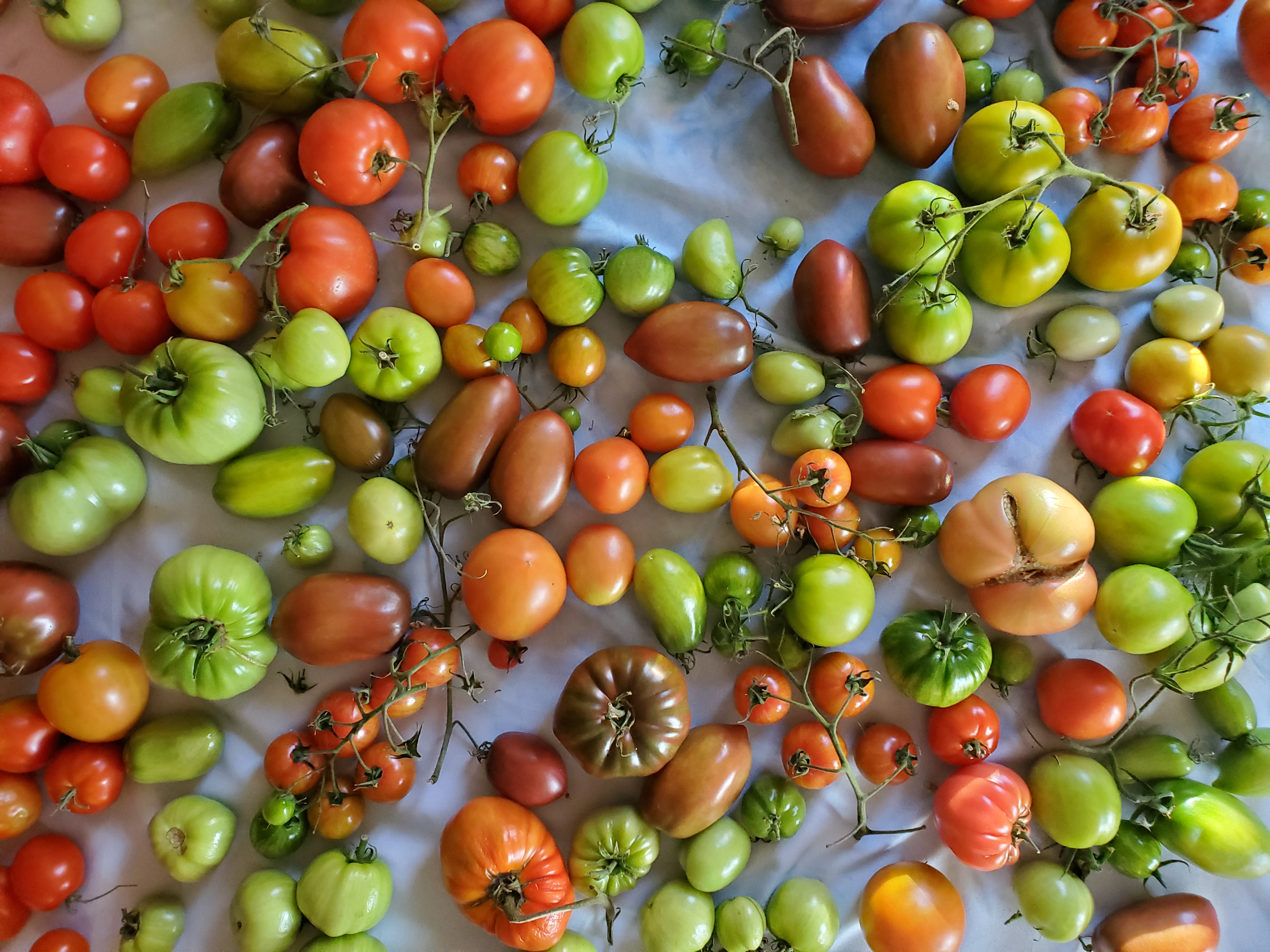
Tomatoes strongly prefer warmer soil and air temperatures. We almost exclusively grow our tomatoes in container based growing systems. Even using optimal techniques, we have to force ripen some of our tomato harvest.
It might not be immediately obvious, or considered, that soil temperatures do not change nearly as quickly as the air. It can take considerably longer for soil to warm up.
You can significantly change the whole thermal dynamics equation when you garden in containers. If you don’t have contact with the ground, your plants aren’t subjected to the cooler temperatures of the ground!
If you’re interested in a deep dive on container gardening, one of our favorite books is The Vegetable Gardener’s Container Bible: How to Grow a Bounty of Food in Pots, Tubs, and Other Containers.
The Sensible Use Of More Expensive Gardening Techniques
While containers are moderately expensive to get into, they do have a much lower per-plant cost compared to raised beds.
Cost wise, containers are going to be in the $3-$15 per plant site range. On average, raised beds will have even higher initial investment costs.
Container gardening is also slightly more expensive to operate than the previously mentioned techniques. Outside of just the cost of the container, they have higher water input costs and high soil costs, just like you have with raised beds.
We have a “rule of thumb” for plants that we grow in containers.
We use containers for any plants that:
- Benefits from warmer soil
- Are fairly large, requiring 12 to 36 inch spacing
- Are expensive (or more costly) to buy at the grocery store
We use our container gardens for peppers, tomatoes, eggplants, huckleberries, basil, beans, cucumbers and artichokes.
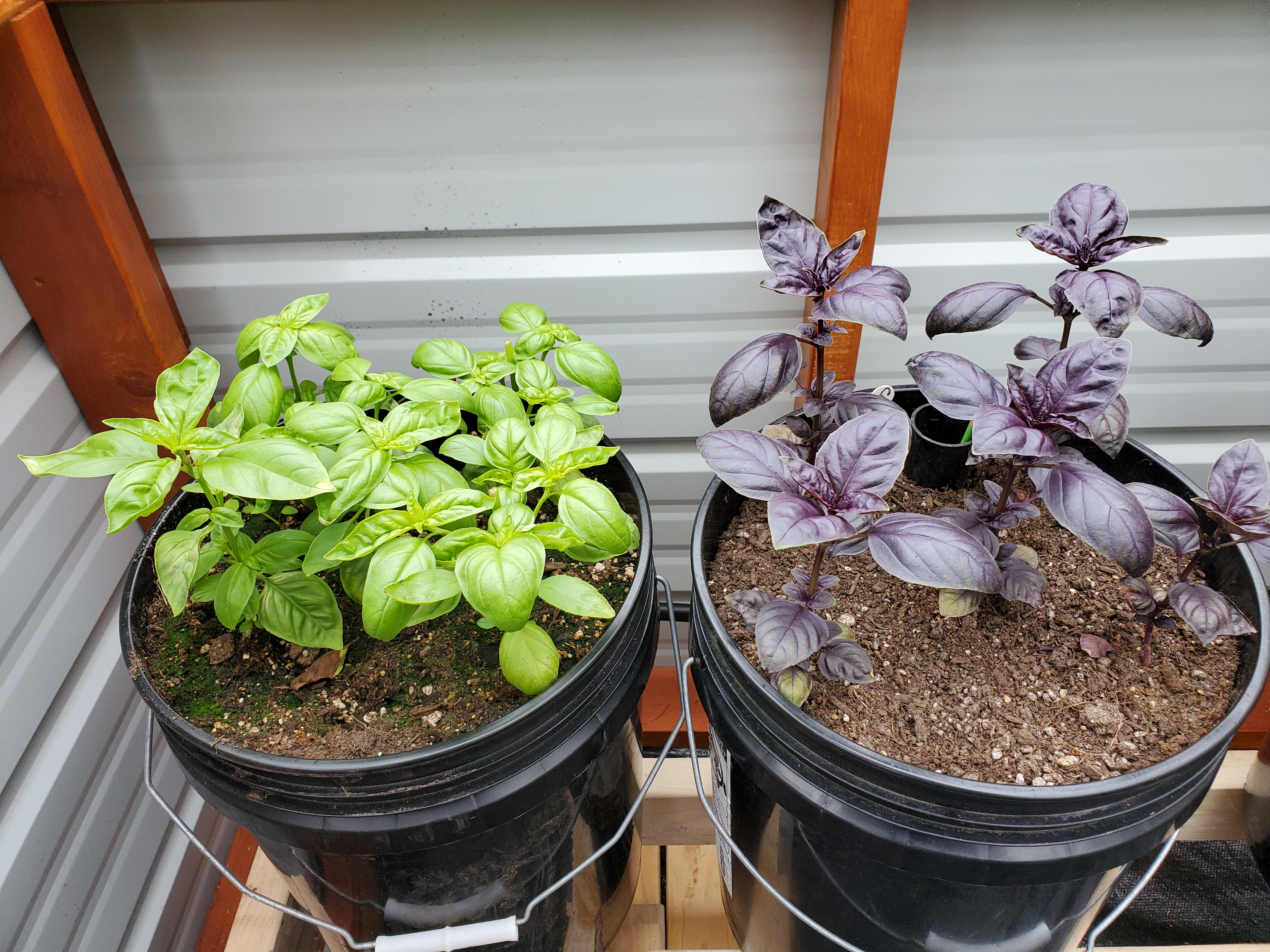
This photo shows some of our basil that we also grow in containers. Herbs are fairly “high value” for us and also highly benefit from the warmer soils when grown in containers.
Since containers are super convenient and can be placed almost anywhere, we also use them for herbs. It’s simply epic to have your herb garden right outside your front door.
Sub Irrigated Containers Are The Norm At Frosty Garden
In 2019, we decided to give a good, hard look at our container gardening techniques. We were previously using fabric grow bags, which is an effective and inexpensive container gardening technique.
Solving The Main Problem Of Container Gardens
We wanted to get our container garden entirely off the water grid.
It was important to us, for a couple of reasons, to have our container garden’s water needs to be fulfilled entirely by our rain water catchment.
The biggest problem with container gardens is they are incredibly inefficient when it comes to water.
The water inefficiency of container gardening made it impossible for us to get that garden off the water grid.
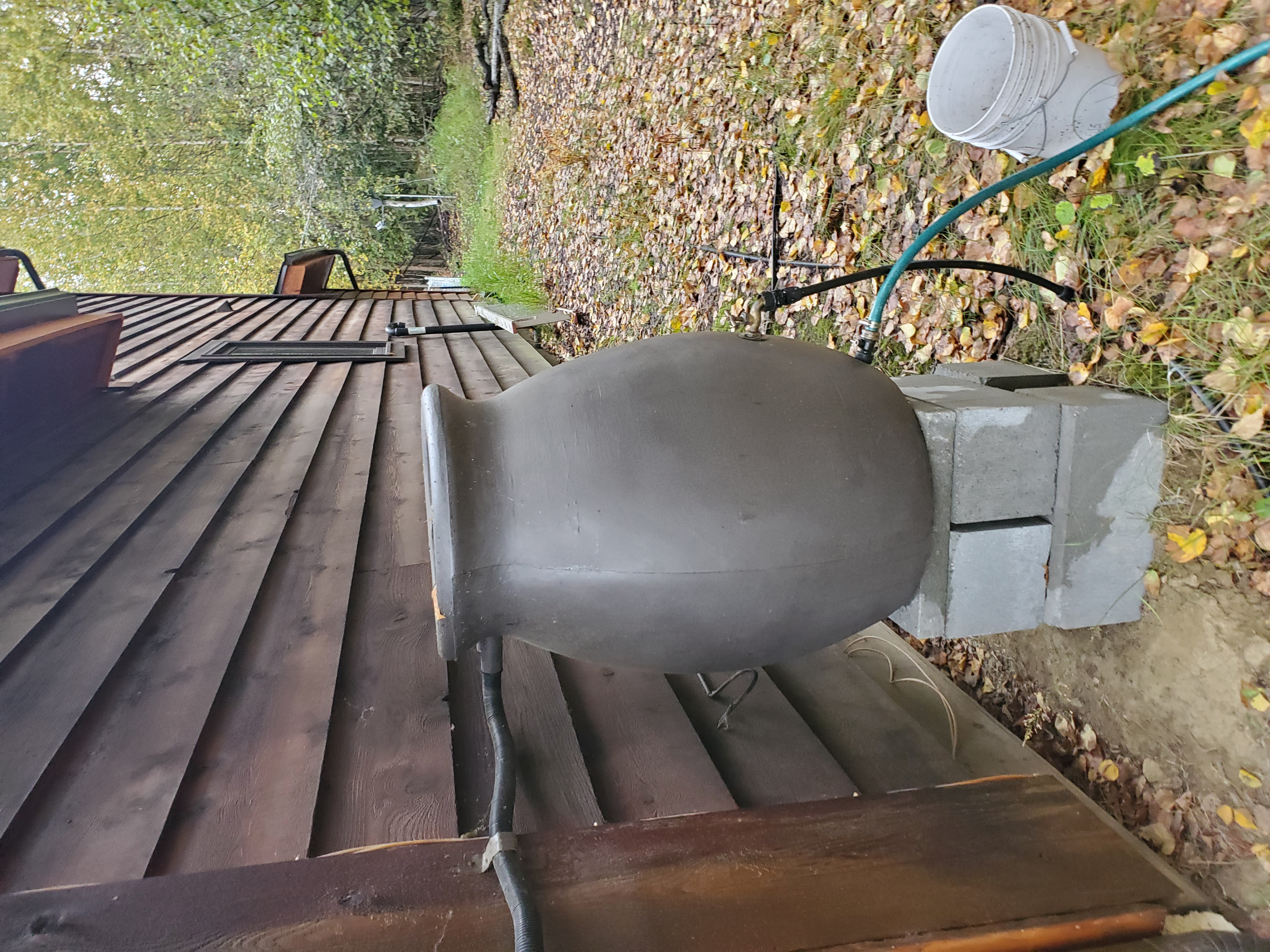
This photo shows part of our rain water catchment system. It is a fully centralized system that sends water to a large 400 gallon water storage tank.
We considered a couple of major techniques that were known for high levels of water efficiency – sub-irrigation and hydroponics. We chose to go with sub-irrigation.
The Right Container Garden For Frosty Garden
Specifically, we went with the GroBucket sub-irrigation solution from GroTech Garden Products. It is a sub irrigated container gardening kit that fits a common 5 gallon bucket.
We have continually increased the size of this system and it’s currently our go-to container gardening technique.

Mint and parsley grown in GroBuckets, a sub-irrigated container garden solution that uses the common 5 gallon bucket. As demonstrated, it is an extremely effective container gardening technique.
What’s great about sub irrigated containers is they are, as mentioned, extremely water efficient. Probably 95% (or better) of the water you apply to the plant will be used by the plant.
They also significantly reduce drought conditions, since sub irrigated containers always have access to water, if needed.
Additionally, you’re still working with soil gardening techniques. While we have worked with hydroponics in the past, we did like that we were still working with soil. All the fertilizers, existing soil and soil gardening knowledge we had could still be used.
In 2020, we took our GroBucket solution even further and connected it to a central, off-grid irrigation system. It’s been simply amazing and has revolutionized our subarctic gardens. With this system, we often only have to water our container garden once a week and sometimes quite a bit longer.
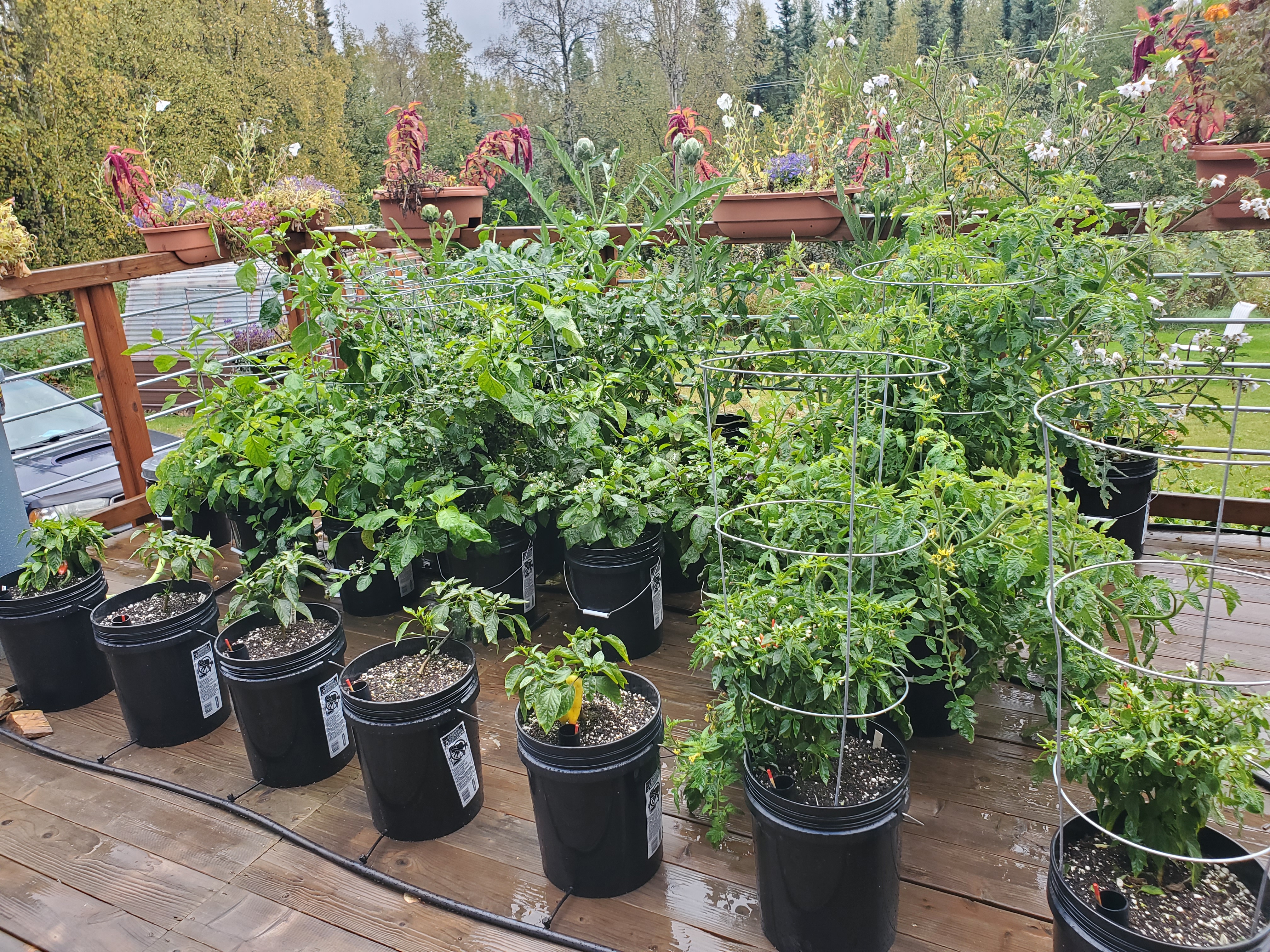
This was our 2020 fully off the water grid sub-irrigated container garden. It was a very effective producer, despite the relatively terrible gardening year. The containers are not on the ground and there was virtually zero risk of a moose getting it!
We did use a commercial solution in this case. It was the right one for us. It wasn’t cheap. Our per-plant cost is almost $20 per grow site when using them.
Though costs will become less in future years, we’re very particular about growing our “high value crops” in them, almost exclusively.
Greenhouses Are Awesome For Subarctic Gardening
In 2020, we built our greenhouse. We were pretty sure it was going to make a big difference, but we had no idea what to expect.

This is the greenhouse we built in 2020. It has been one of the best investments we have made into gardening and the most impactful overall.
Having a greenhouse has been so profoundly garden changing for us. We are resistant to call it “essential” but if you really want to grow those warm weather crops effectively in the subarctic – a greenhouse is almost essential.
Of all the techniques and various improvements we’ve made to our subarctic gardening techniques, the greenhouse has been the most impactful.
The yield improvements that we get from tomatoes and other warm loving plants have been absolutely worth it. In many cases, we’re seeing exponentially better returns in produce. As we tune it and learn how to use it most effectively, that trend should only continue.
That said, it’s also the single most expensive investment we’ve made into our gardens. Our initial per-plant costs are so ridiculously high that we’re almost ashamed to write it down.
It’s a mind boggling $75 per plant site cost! $75. PER PLANT!
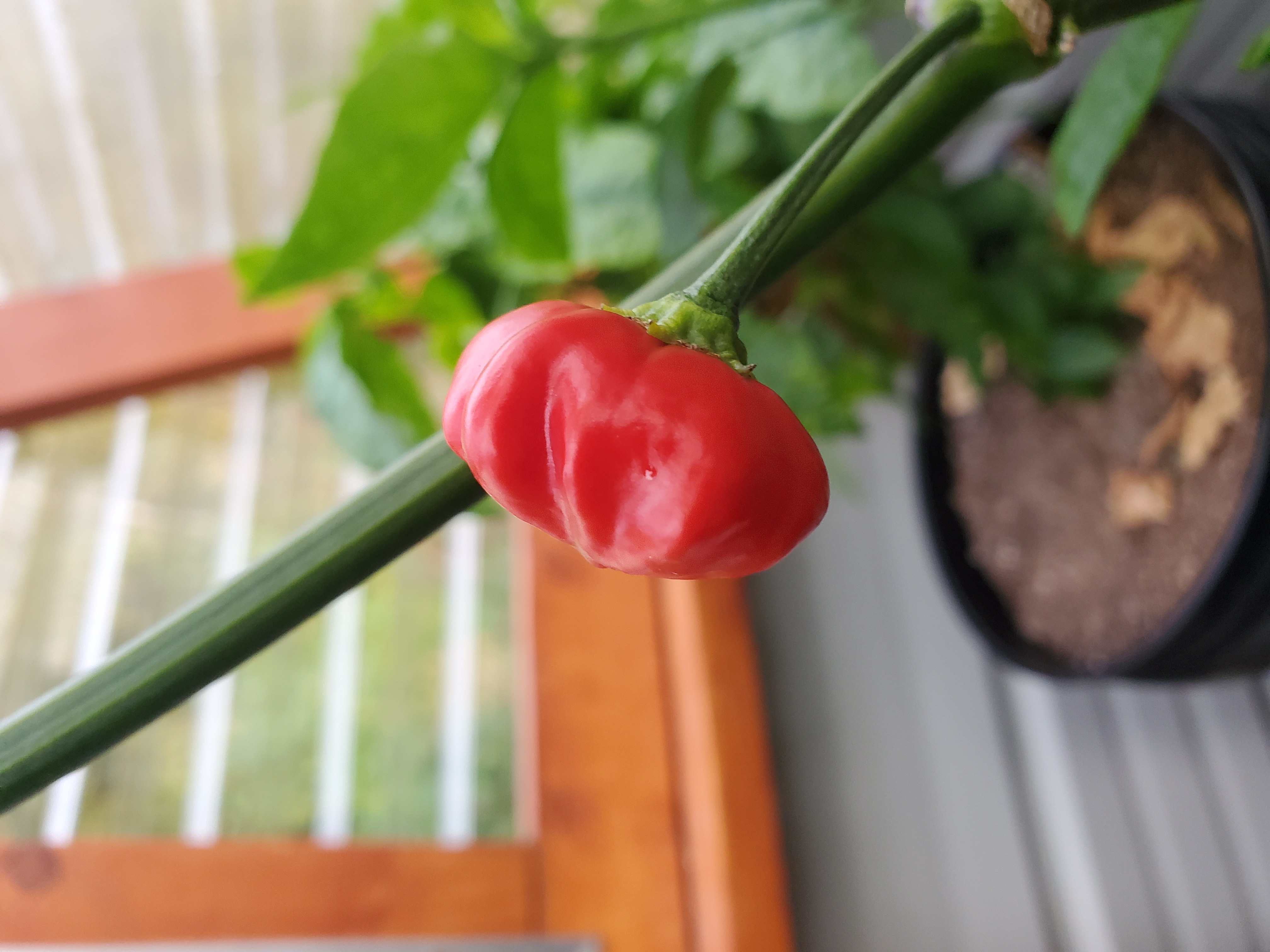
This is a mature, subarctic grown capsicum baccatum pepper. It is probably one of very few capsicum baccatum peppers that has ever been produced at subarctic latitudes.
Of course, the more years that we use our greenhouse, the more that per plant cost will go down. It was, and still is, considered a long term investment. That per plant cost will eventually go down to almost nothing.
What this means, though, is that this technique is reserved entirely for high value crops. Things that go in our greenhouse need to provide maximum value from the more optimal growing conditions.
Our first year using our greenhouse, we produced over 100 pounds of tomatoes. If we were to buy fresh, heirloom grade tomatoes at the grocery, it would have likely cost $500 to $600 dollars. That’s what we mean by maximizing our garden return.
We will eventually yield enough produce to pay for our greenhouse. It’s just going to take a few years.
Combining Techniques For Subarctic Garden Winning
We’ve discussed a few different techniques and tools that we use.
Where you really start to win subarctic gardening, though, is when you start combining these techniques together.
We knew we were primarily going to be using our greenhouse for plants that met our two criteria for growing them in containers. They were large plants, preferred warmer soils and were stupid expensive at the grocery store.
Why does it all of a sudden make sense to use a different growing technique? The answer is? It doesn’t.
Our greenhouse, from day one, was built to use our sub-irrigated buckets. If it wasn’t that, it probably would have been fabric grow bags.
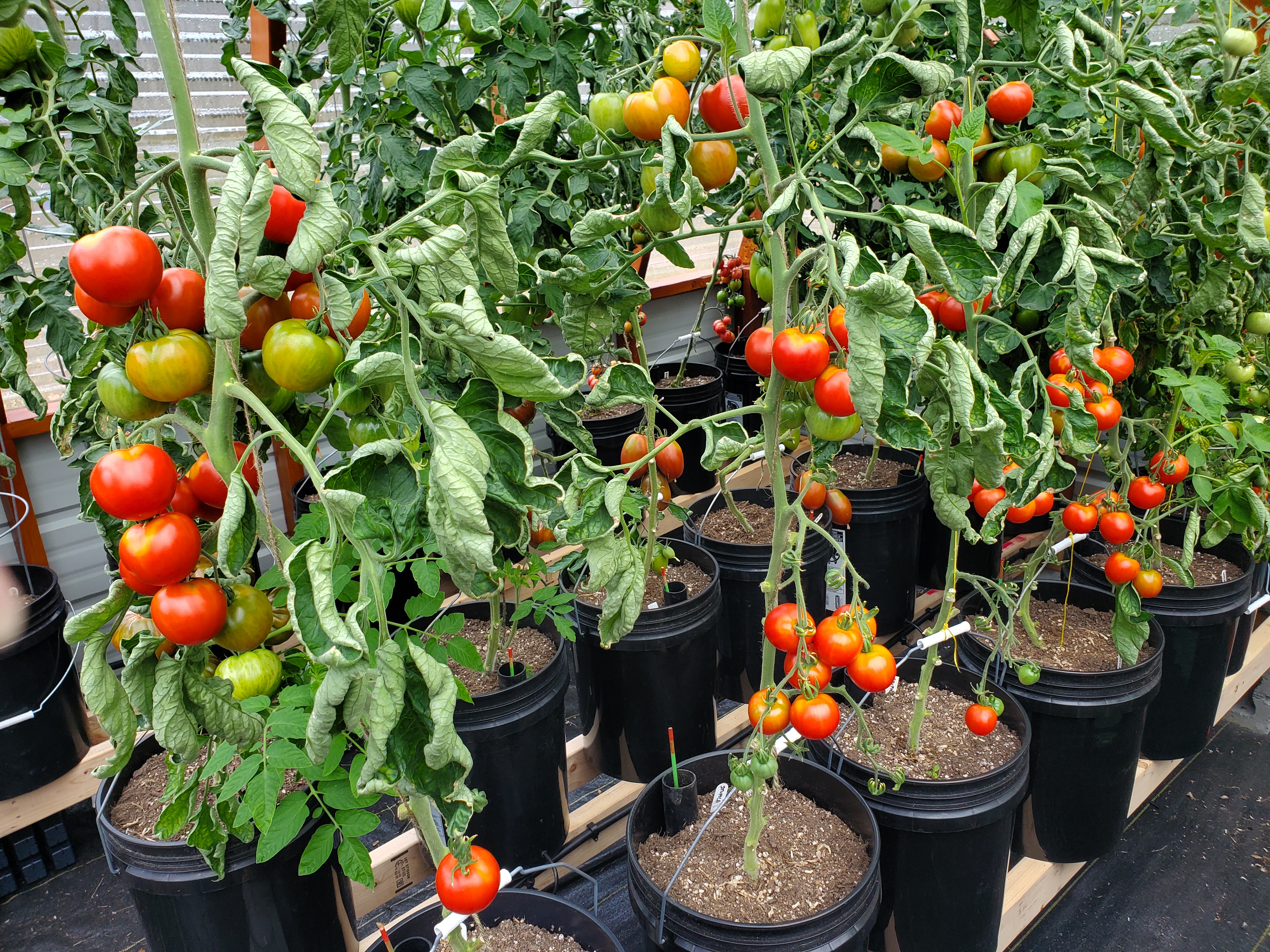
We have been able to achieve incredible results combing multiple core gardening techniques. These are some of our subarctic grown tomatoes from our greenhouse, growing in sub-irrigated containers.
We could have put in raised beds, or even wide raised rows. Or we even could have grown in the ground. The greenhouse would have improved all those techniques, a lot!
What we aimed for, though, was to combine multiple beneficial techniques to create an even more optimal technique.
Rome Was Not Built In A Day
We understand that we just put a lot of “food for thought” in this piece.
We hope that we have provided the insight of why we use several different gardening techniques, specifically for growing in the subarctic.
Understand, though, we did not figure all this out in our first season. We have continually evolved our gardening techniques and then further refined them for our specific needs.
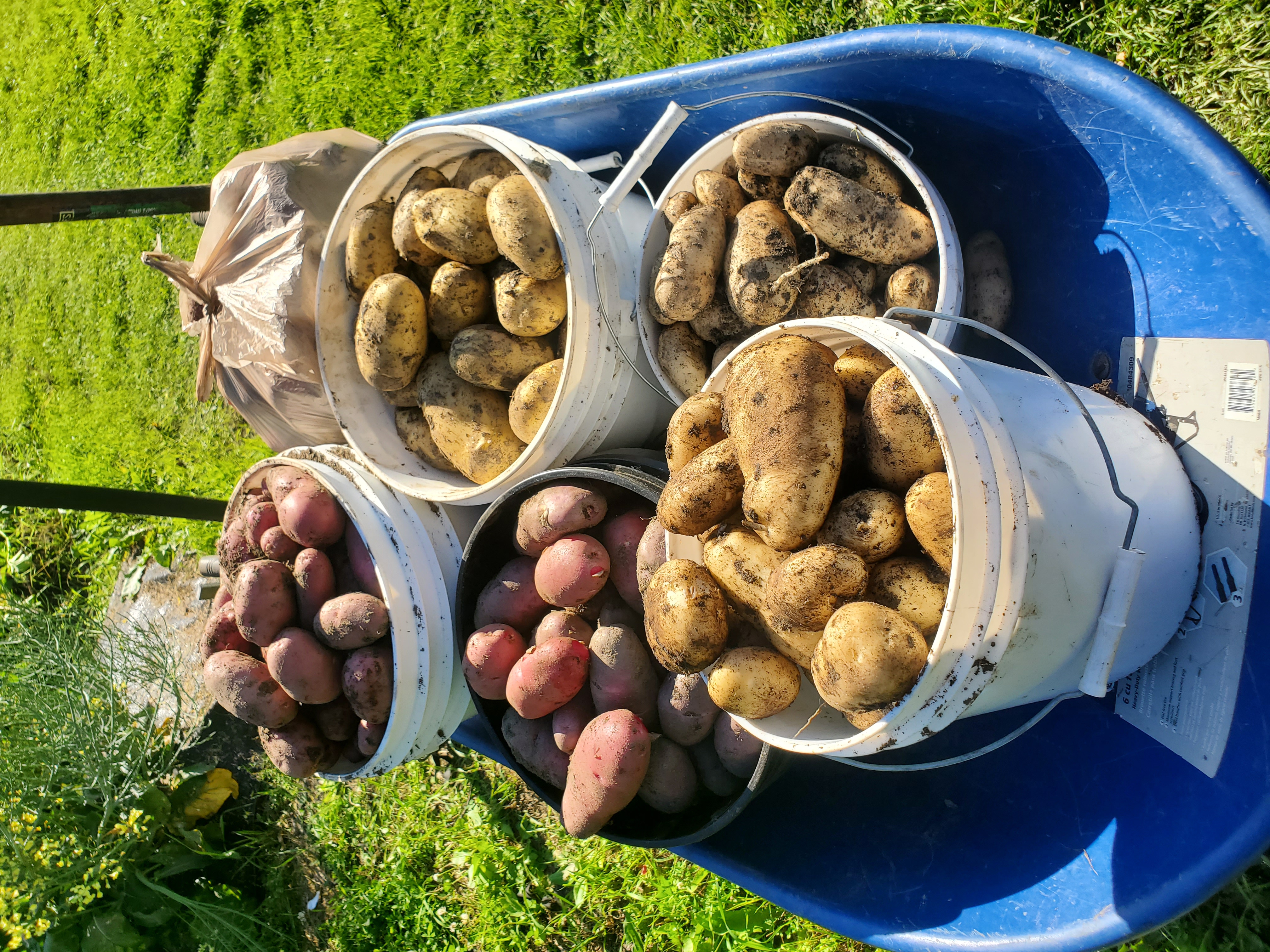
We aren’t done yet. Subarctic gardening is something you can choose to get better at every year. That’s really the only way you can do it.
An iterative approach to our learning about subarctic gardening has been tremendously useful to us.
When we start using previous discoveries and knowledge with new attempts to get knowledge, we are seeing exponential benefits.
That’s All We Wrote!

Having a good time? We have an ever growing list of insightful and helpful subarctic & cold climate gardening articles, waiting out there for you!
- Cold Climate Gardening Basics 👉
- Growing Your Garden From Seed Indoors 👉
- Advanced Cold Climate Gardening Techniques 👉
- Plant Specific Cold Climate Growing Guides 👉
- Subarctic Perennial Food Forests & Foraging 👉
- Indoor Garden Lighting & Grow Rooms 👉
- Greenhouses & Temperature Control 👉
- Harvesting & Food Preservation 👉
- Solving Cold Climate Garden Problems 👉
- 1 Minute Reads On Tons Of Garden Topics 👉
FrostyGarden.com is 100% ad-free and we do not use affiliate links! This resource is voluntarily supported by our readers. (Like YOU!) If we provided you value, would you consider supporting us?
